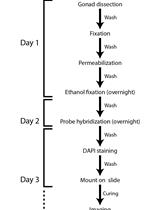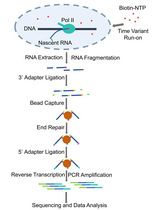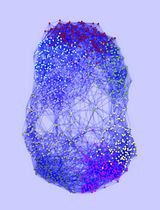- EN - English
- CN - 中文
Adapting the Smart-seq2 Protocol for Robust Single Worm RNA-seq
改编Smart-seq2实验方案以实现稳定的单蠕虫RNA测序
发布: 2018年02月20日第8卷第4期 DOI: 10.21769/BioProtoc.2729 浏览次数: 20673
评审: Pengpeng LiHillel SchwarzLokesh Kalekar
Abstract
Most nematodes are small worms that lack enough RNA for regular RNA-seq protocols without pooling hundred to thousand of individuals. We have adapted the Smart-seq2 protocol in order to sequence the transcriptome of an individual worm. While developed for individual Steinernema carpocapsae and Caenorhabditis elegans larvae as well as embryos, the protocol should be adaptable for other nematode species and small invertebrates. In addition, we describe how to analyze the RNA-seq results using the Galaxy online environment. We expect that this method will be useful for the studying gene expression variances of individual nematodes in wild type and mutant backgrounds.
Keywords: RNA-seq (RNA-seq)Background
Low input RNA-seq protocols and amplification kits, such as Smart-seq (Takara Bio, USA, Inc) and SuperAmp (Miltenyl Biotec, Inc), have been increasingly developed and commercialized as a response to the growing prevalence of low input RNA-seq studies based on small tissues, single microorganisms, and single cells. These studies often explore and address heterogeneous gene expression among individuals of a certain population, such as a population of cells, a complex tissue, or a population of microscopic organisms. Improvements and adaptations of low input RNA-seq protocols for microscopic organisms, such as nematodes, will greatly benefit the field of nematology by allowing for the analysis of gene expression heterogeneity at the single nematode level. Here we have adapted the single cell RNA-seq protocol, Smart-seq2 (Picelli et al., 2013 and 2014; Trombetta et al., 2014), for single nematode RNA-sequencing. We successfully utilized adapted versions of this protocol in the transcriptomic analysis of the insect-parasitic nematode, Steinernema carpocapsae (Lu et al., 2017) as well as in the analysis of individual embryos and L1 larvae from two Steinernema and two Caenorhabditis species including C. elegans (Macchietto et al., 2017), but this protocol can be adapted for any species of nematode. While this protocol will work on nematodes without already sequenced genomes or transcriptomes, we limit our computational analysis to organisms with published genome annotations, such as S. carpocapsae (Dillman et al., 2015). Our need for single nematode RNA-sequencing arose as a method to circumvent the limitations of working with samples with low-inputs of RNA. For example, many of our in vivo experiments limited the number of nematodes we could utilize. Single nematode RNA-seq has allowed us to efficiently obtain high resolution gene expression data from these nematodes. The protocol has also enabled us to collect individual embryos to map out time courses of nematode embryonic development for comparative transcriptomics across multiple species. The development and advancement of low input RNA-seq protocols will aid investigators in circumventing issues related to using individual organisms and specialized/limited samples.
Materials and Reagents
- Gloves
- 8-strip, nuclease-free, 0.2-ml, thin-walled PCR tubes with caps (SARSTEDT, catalog numbers: 72.985.002 and 65.989.002 )
- Needle 25 G 1.5 inch regular (BD, PrecisionGlide, catalog number: 305127 )
- QubitTM assay tubes (Thermo Fisher Scientific, InvitrogenTM, catalog number: Q32856 )
- Pipette tips
- 1.5 ml Eppendorf tube
- Spatulas
- 70% ethanol or RNase away
- Proteinase K (QIAGEN, catalog number: 19131 )
- RNasin ribonuclease inhibitor (RNase inhibitor) (Promega, catalog number: N2611 )
- UltraPure DNase/RNase free distilled water (Thermo Fisher Scientific, GibcoTM, catalog number: 10977015 )
- Oligo-dT30VN primer (ordered from IDT (https://www.idtdna.com/site)): 5’-AAGCAGTGGTATCAACGCAGAGTACT30VN-3’
Note: This oligonucleotide anneals to all the RNAs containing a poly(A) tail. The 3’ end of this oligonucleotide contains ‘VN’, where ‘N’ is any base and ‘V’ is either A, C or G. The two terminal nucleotides are necessary for anchoring the oligonucleotide to the beginning of the poly(A) tail and for avoiding unnecessary amplification of long stretches of adenosines. Dissolve the oligonucleotide in TE buffer to a final concentration of 100 μM. Store this oligo at -20 °C for 6 months. - dNTP mix (10 mM each) (Thermo Fisher Scientific, Thermo ScientificTM, catalog number: R0192 )
- Superscript II reverse transcriptase kit (Thermo Fisher Scientific, InvitrogenTM, catalog number: 18064014 )
- LNA-modified TSO (ordered from Exiqon (http://www.exiqon.com/))
5’-AAGCAGTGGTATCAACGCAGAGTACATrGrG+G-3’
Note: At the 5’ end, this TSO carries a common primer sequence, whereas, at the 3’ end, there are two riboguanosines (rG) and one LNA-modified guanosine (+G) to facilitate template switching. TSO dissolved in TE buffer can be stored in 100 μM aliquots at -80 °C for 6 months. Avoid repeated freeze-thaw cycles. - Betaine (BioUltra ≥ 99.0%) (Sigma-Aldrich, catalog number: 61962 )
- Magnesium chloride (MgCl2; anhydrous) (Sigma-Aldrich, catalog number: M8266 )
- Kapa HiFi HotStart ReadyMix (Kapa Biosystems, catalog number: KK2602 )
- IS PCR oligo (ordered from IDT (https://www.idtdna.com/site))
5’-AAGCAGTGGTATCAACGCAGAGT-3’
Note: This oligonucleotide acts as PCR primer in the amplification step after RT. Dissolve the oligonucleotide in TE buffer to a final concentration of 100 μM. This oligo can be stored at -20 °C for 6 months. - Agencourt Ampure XP beads (Beckman Coulter, catalog number: A63881 )
- Ethanol 99.5% (vol/vol) (Kemethyl, catalog number: SN366915-06 )
- QubitTM dsDNA HS assay kit (Thermo Fisher Scientific, InvitrogenTM, catalog number: Q32854 )
- Agilent high sensitivity DNA kit (Agilent Technologies, catalog number: 5067-4626 )
- Buffer PM (QIAGEN, catalog number: 19083 )
- Nextera DNA library prep kit (24 samples) (Illumina, catalog number: FC-121-1030 )
- QIAquick PCR purification kit (50) (QIAGEN, catalog number: 28104 )
- Phusion high fidelity PCR master mix with HF buffer, 500 reactions (New England Biolabs, catalog number: M0531L )
- Tris-HCl pH 8.0 (Thermo Fisher Scientific, InvitrogenTM, catalog number: AM9850G )
- Triton X-100 (Sigma-Aldrich, catalog number: T9284 )
- EDTA pH 8.0 (Mediatech, catalog number: 46-034-Cl )
- Polysorbate 20, Acros OrganicsTM (Tween 20) (Acros Organics, catalog number: 233362500 )
- RNaseZap (Thermo Fisher Scientific, InvitrogenTM, catalog number: AM9780 )
- List of sequencing indexes (Buenrostro et al., 2015) (see Supplemental file)
Equipment
- Pipettes
- Mini-centrifuge with head for 8-strip PCR tubes
- Vortexer
- Thermocycler
- Stereo microscope
- Qubit® Fluorometer
- Agilent 2100 Bioanalyzer (Agilent Technologies, model: Agilent 2100 , catalog number: G2938C)
- Magnetic stand 96 (Thermo Fisher Scientific, catalog number: AM10027 )
Procedure
文章信息
版权信息
© 2018 The Authors; exclusive licensee Bio-protocol LLC.
如何引用
Serra, L., Chang, D., Macchietto, M., Williams, K., Murad, R., Lu, D., Dillman, A. R. and Mortazavi, A. (2018). Adapting the Smart-seq2 Protocol for Robust Single Worm RNA-seq. Bio-protocol 8(4): e2729. DOI: 10.21769/BioProtoc.2729.
分类
系统生物学 > 转录组学 > RNA测序
分子生物学 > RNA > 转录
您对这篇实验方法有问题吗?
在此处发布您的问题,我们将邀请本文作者来回答。同时,我们会将您的问题发布到Bio-protocol Exchange,以便寻求社区成员的帮助。
提问指南
+ 问题描述
写下详细的问题描述,包括所有有助于他人回答您问题的信息(例如实验过程、条件和相关图像等)。
Share
Bluesky
X
Copy link













